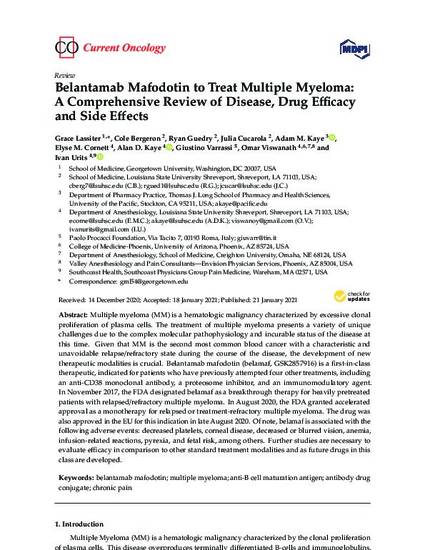
Multiple myeloma (MM) is a hematologic malignancy characterized by excessive clonal proliferation of plasma cells. The treatment of multiple myeloma presents a variety of unique challenges due to the complex molecular pathophysiology and incurable status of the disease at this time. Given that MM is the second most common blood cancer with a characteristic and unavoidable relapse/refractory state during the course of the disease, the development of new therapeutic modalities is crucial. Belantamab mafodotin (belamaf, GSK2857916) is a first-in-class therapeutic, indicated for patients who have previously attempted four other treatments, including an anti-CD38 monoclonal antibody, a proteosome inhibitor, and an immunomodulatory agent. In November 2017, the FDA designated belamaf as a breakthrough therapy for heavily pretreated patients with relapsed/refractory multiple myeloma. In August 2020, the FDA granted accelerated approval as a monotherapy for relapsed or treatment-refractory multiple myeloma. The drug was also approved in the EU for this indication in late August 2020. Of note, belamaf is associated with the following adverse events: decreased platelets, corneal disease, decreased or blurred vision, anemia, infusion-related reactions, pyrexia, and fetal risk, among others. Further studies are necessary to evaluate efficacy in comparison to other standard treatment modalities and as future drugs in this class are developed.
Available at: http://works.bepress.com/adam-kaye/49/
